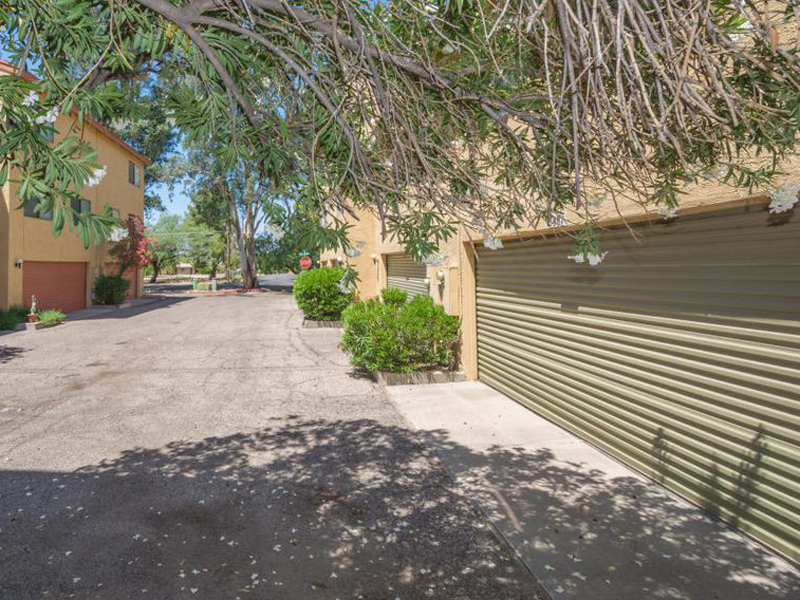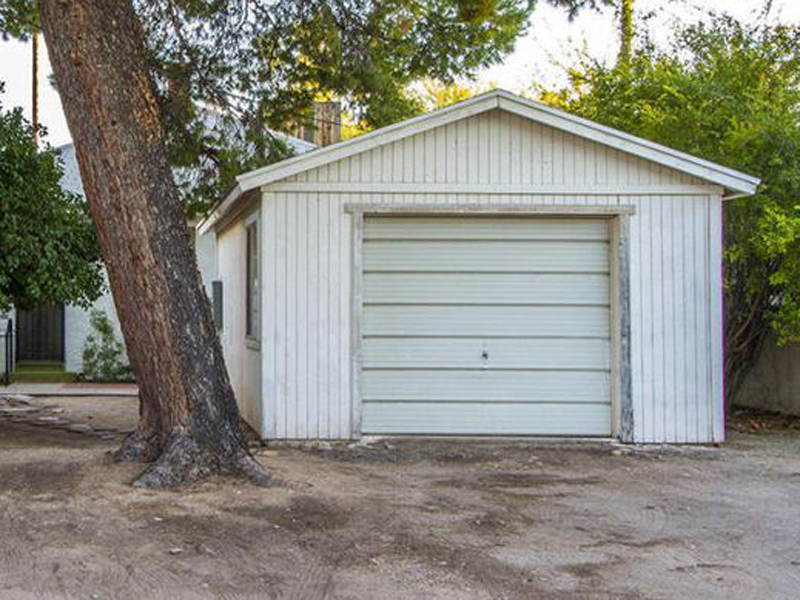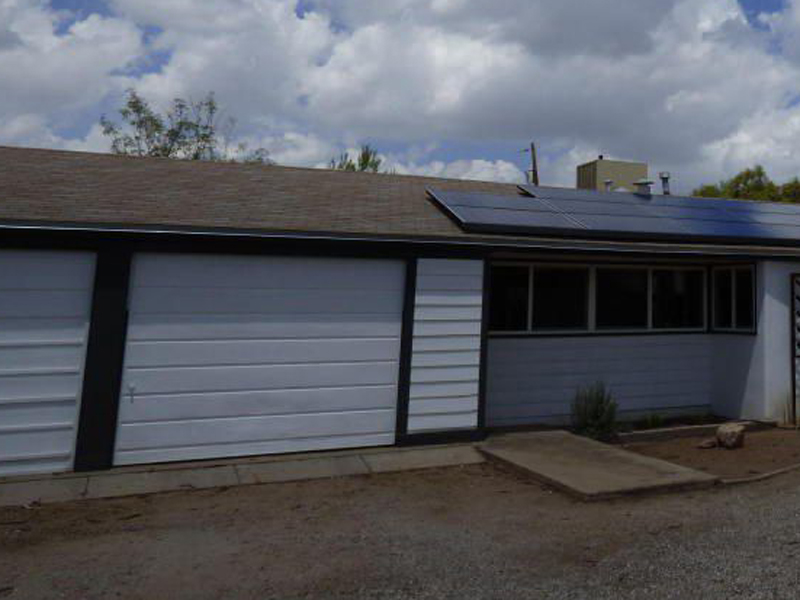Is Your Garage Door Stuck? Below's What to Do First
When your garage door will not open, begin with these necessary safety checks before attempting any kind of repairs. First, make sure no person is standing near the door and that vehicles are clear of the opening. Look for noticeable indications of damage like broken panels, curved tracks, or hanging cable televisions. If you see a snapped springtime or significantly damaged elements, quit quickly and call a professional—-- these repair services require specialized devices and experience to deal with securely.

Check These 6 Points Prior To Calling a Professional
Prior to thinking you require pricey repair work, run through this quick diagnostic list that fixes most garage door issues:
-
Source of power: Verify the opener is connected in and the outlet is working
-
Remote batteries: Replace dead batteries in your remote
-
Hand-operated lock: Inspect if someone inadvertently engaged the hand-operated lock
-
Blockages: Seek debris blocking the door's path or sensors
-
Emergency situation launch: Guarantee the red emergency situation cable hasn't been pulled
-
Breaker: Confirm the garage circuit hasn't tripped
These simple checks settle approximately 70% of garage door concerns without needing specialist intervention.
10 Common Reasons Your Garage Door Will Not Open Up
Comprehending why your garage door opener isn't functioning helps you select the appropriate remedy. Here are the most constant reasons house owners experience:
Dead remote batteries represent the easiest fix—-- when batteries pass away, the remote can't send signals to the opener. Power blackouts or tripped breakers cut electrical energy to the motor. Broken springtimes avoid the door from raising correctly and call for instant professional focus. Sensing unit imbalance causes safety systems to obstruct door procedure. Track obstructions stop rollers from relocating smoothly. Electric motor overload triggers automated shutoffs when the opener finds resistance. Restriction button problems puzzle the opener regarding door placement. Cable television damage disrupts the lifting mechanism. Weather-related problems influence door activity throughout extreme temperature levels. Part wear from age gradually decreases system performance.
Trouble # 1: Dead Push-button Control Batteries
When your wall button works yet your remote does not, dead batteries are usually the wrongdoer. A lot of garage door remotes utilize either 3-volt lithium or 12-volt alkaline batteries. Remove the back cover of your remote and examine the battery kind. Replace with fresh batteries and check the remote. If it still does not function, you may require to reprogram it to your opener. Consult your opener's manual for specific reprogramming guidelines, as the process differs by producer.
Trouble # 2: Power Supply Issues
Garage door power issues commonly originate from loose links or stumbled circuits. Check that the opener is firmly linked into its electrical outlet—-- resonance can loosen connections in time. Evaluate the outlet with an additional gadget to confirm it's functioning. Examine your home's breaker box for tripped circuits, especially if you have actually experienced storms or power changes. GFCI electrical outlets may have stumbled and require resetting. If the opener has power however won't react, the concern most likely lies somewhere else in the system.
Trouble # 3: Broken or Damaged Springs
Damaged garage door springtimes are among the most harmful parts to deal with. If you hear a loud bang from your garage or see the door feels exceptionally hefty when attempting to lift by hand, a springtime has most likely snapped. Torsion springtimes run flat above the door, while extension springs rest on either side. Never attempt spring fixings on your own—-- these parts save remarkable stress that can trigger significant injury or death. Specialist replacement generally costs $150-$300 yet guarantees your safety.
Issue # 4: Blocked Safety And Security Sensors
Modern garage doors feature safety and security sensing units that stop how to align garage door sensors correctly closure when items are discovered. These sensing units can stop the door from opening if they're unclean, misaligned, or blocked by particles. Tidy sensor lenses with a soft towel and guarantee nothing obstructs the unseen beam of light between them. Check that sensors are effectively straightened—-- most have sign lights that reveal connection status. Sensing unit problems commonly fix with basic cleansing and modification.
Trouble # 5: Track Obstructions or Damage
Garage door tracks overview rollers as the door goes up and down. Dirt, particles, old grease, or small objects can jam the system. Evaluate tracks visually and remove any obstructions with a brush or fabric. Look for dents, bends, or warping that can hamper smooth procedure. Small track changes are possible for useful home owners, but substantial damages calls for expert repair to avoid additional issues or security risks.
Issue # 6: Garage Door Opener Motor Issues
When the garage door motor runs but the door does not move, several problems could be liable. The electric motor might be strained and shutting off as a precaution. Gear wear, specifically in older systems, can protect against proper operation. Chain or belt drive problems affect power transmission. If you hear unusual grinding, clicking, or humming sounds, stop utilizing the opener quickly. Motor repairs often cost more than substitute, specifically for devices over 10 years old.
Step-by-Step Do It Yourself Troubleshooting Overview
Follow this systematic strategy to garage door troubleshooting while prioritizing safety and security throughout the process:
Action 1: Test the wall button first. If it functions but the remote doesn't, concentrate on remote issues. If neither works, check power supply.
Action 2: Check out the hand-operated release cord. If it's been pulled, the opener is disengaged from the door. Push the cart back to reconnect.
Action 3: Manually examine the door by disengaging the opener and attempting to lift the door by hand. It should relocate efficiently and remain in place when half-open.
Step 4: Check noticeable components for damages, paying special attention to springs, cables, and tracks.
Tip 5: Inspect all safety features including sensing units, limit buttons, and auto-reverse features.
Action 6: Test various controls (remote, wall button, keypad) to isolate the issue resource.
Constantly wear safety glasses and work gloves when executing assessments, and never ever effort repair services on springtimes or high-tension parts.
When to Call a Specialist vs. do it yourself Solutions

Understanding when to call a garage door expert versus trying DIY repair work protects both your safety and security and your pocketbook. Deal with these issues yourself: dead remote batteries, power supply problems, small track cleaning, sensing unit cleaning and alignment, and basic lubrication.
Never try these repair services on your own: springtime replacement or adjustment, cord repair services, significant track adjustment, electric circuitry concerns, opener electric motor replacement, or any repair work involving high-tension components. Professional professionals have actually specialized devices, training, and insurance to manage dangerous repairs safely.
Think about fixing expenses versus replacement costs, particularly for doors over 15 years of ages. Modern garage doors offer far better security features, energy effectiveness, and dependability than older versions.
Emergency Garage Door Solutions
When you're stuck to a garage door that won't open and need instant gain access to, follow these emergency treatments:
Handbook Operation: Pull the red emergency release cable to disengage the opener. This allows manual operation but requires appropriate method to stay clear of injury. Raise the door gradually and evenly, utilizing leg muscle mass rather than your back. A lot of residential doors evaluate 100-150 extra pounds, making them manageable for the majority of grownups.
Temporary Solutions: If the door opens up manually however won't keep up, prop it open with sawhorses or clamps—-- never use your body or cars as supports. For doors that won't close entirely, make sure the opening is secured if you have to leave.
Emergency Service: Many garage door firms provide 24/7 emergency situation service for circumstances involving safety concerns, caught vehicles, or full system failings. While a lot more pricey than regular solution calls, emergency situation repair work offer immediate remedies when needed most.
Safety Warning: What NOT to Do
Garage door safety calls for comprehending hazardous repair work that should never ever be attempted by property owners:
Never ever try to repair springtimes—-- they keep sufficient energy to trigger fatal injuries when they break or are incorrectly taken care of. Do not force a stuck door—-- this can damage the opener, tracks, or door panels, producing extra expensive troubles. Avoid bypassing security features—-- sensing units and auto-reverse systems avoid significant injuries and residential property damages.
Do not overlook odd sounds—-- grinding, scraping, or banging noises indicate troubles that aggravate in time. Never utilize the door if cords are torn or damaged—-- the door can drop suddenly. Don't attempt electrical repairs unless you're a qualified electrical expert—-- garage door openers use both 120V household existing and low-voltage control circuits.

Precautionary Maintenance to Avoid Future Issues
Regular garage door upkeep stops most typical problems and extends system life-span dramatically:
Month-to-month Jobs: Aesthetic examination of all components, examining auto-reverse security attributes, inspecting and tightening equipment, and cleaning tracks and sensing units.
Quarterly Jobs: Oiling all relocating parts with proper garage door lubricant, screening handbook procedure, and checking weather condition securing.
Yearly Tasks: Specialist inspection and tune-up, spring change if needed, and opener maintenance including belt or chain modification.
Seasonal Tasks: Preparing for weather condition extremes, inspecting insulation, and adjusting opener setups for temperature level modifications.
Constant maintenance prices much less than emergency situation repairs and makes sure reputable procedure year-round.
Garage Door Won't Open FAQs
Why will not my garage door open with the remote however works with the wall button?
This typically indicates dead remote batteries, signal disturbance, or the requirement to reprogram the remote. Check batteries first, after that consult your opener guidebook for reprogramming instructions.
Can I manually open my garage door if the power is out?
Yes, draw the red emergency release cord to disengage the opener, after that lift the door by hand. Be prepared for the door's full weight and lift with appropriate strategy to avoid injury.
Just how do I understand if my garage door springtime is damaged?
Indications include a loud bang from the garage, the door feeling extremely heavy when lifting manually, noticeable spaces in the springtime coils, or the door just opening a few inches before stopping.
Is it safe to utilize my garage door if it will not open right?
No, partial operation suggests mechanical problems that could aggravate all of a sudden. Quit making use of the door and have it evaluated by a professional to avoid more damages or injury.
What should I do if my garage door opens up however will not close?
Check safety sensors for obstructions or misalignment, analyze the tracks for particles, and test the auto-reverse feature. If these do not address the trouble, speak with an expert.
Just how much does it set you back to take care of a garage door that won't open up?
Expenses differ widely depending upon the problem: battery substitute ($5-$10), professional medical diagnosis ($50-$100), springtime substitute ($150-$300), or opener substitute ($200-$500).
Can weather influence my garage door's capability to open up?
Yes, extreme cold can enlarge lubricating substances and affect steel elements, while warm can cause development concerns. The majority of issues resolve as temperatures stabilize, yet persistent problems might need specialist focus.
Why does my garage door open a few inches after that stop?
This usually shows broken springs, limit button troubles, or track blockages. The opener's security attributes stop procedure when resistance is identified, protecting against damage to the electric motor or door.
Get Professional Aid for Facility Issues
When DIY troubleshooting doesn't solve your garage door issues, professional technicians offer the proficiency and devices needed for risk-free, long-term repair services. Qualified experts detect issues precisely, utilize manufacturer-approved components, and offer service warranties on their job.
Professional services include: thorough system evaluations, springtime and cable television replacement, opener repair service and substitute, track alignment and replacement, electric troubleshooting, and emergency solution telephone calls.
What to expect: upfront pricing, licensed and insured specialists, same-day service for several repair services, and follow-up upkeep recommendations.
A lot of garage door business supply complimentary quotes for significant fixings and can provide prompt services for immediate troubles influencing home safety or lorry gain access to.
Getting Your Garage Door Working Again
A garage door that won't open does not have to wreck your day or break your spending plan. Begin with simple troubleshooting actions like checking power, replacing batteries, and checking out for obvious blockages. Many troubles have fast do it yourself services that bring back normal procedure within minutes.
However, acknowledge when professional help is needed—-- especially for spring-related issues, electric troubles, or complex mechanical failures. Trying harmful repairs yourself risks severe injury and typically creates more pricey troubles.
Regular maintenance avoids most garage door issues and makes sure reputable procedure for several years ahead. When problems do occur, resolve them promptly to avoid even more expensive repairs and keep your home's protection and ease. Whether you need a straightforward battery replacement or full system overhaul, options exist to get your garage door functioning smoothly once again.